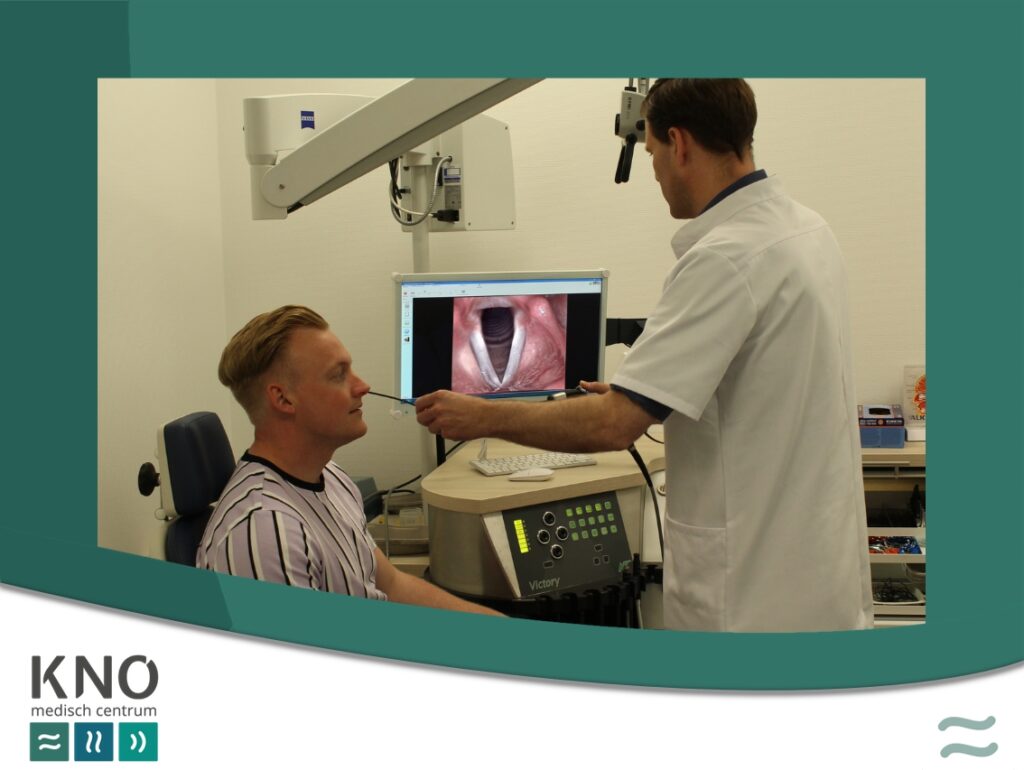what is an outpatient treatment of the vocal cords?
explanation
We talk using our vocal cords. If there are abnormalities in these vocal cords, the voice may sound hoarse. This hoarseness makes your voice sound different from normal and can make speaking more difficult. If there are abnormalities on the vocal cord, tissue can be removed by means of vocal cord treatment. The entire lesion can also be removed so that the voice sounds better again. Due to the outpatient treatment of the vocal cords, you often no longer need general anesthesia for this and you can go home immediately after the treatment.

Why an outpatient treatment of the vocal cords?
why the treatment
By means of outpatient treatment it is possible to remove the abnormality on your vocal cord, which improves the voice quality.
It is also possible to take tissue to investigate the nature of the abnormality.
how do you prepare?
preparation
Practical tips What to bring?
For every appointment in the ENT Medical Center you must bring: a valid proof of identity and your Current Medication Overview (AMO).
Do you take medication?
Are you hypersensitive to anesthetic fluid, plasters or other substances?
Report this to the doctor or assistant.
Do you use blood-thinning medicines?
Then you may have to stop it temporarily. The doctor will then discuss this with you.
It is wise not to eat too much just before the examination because the throat is numbed.
What happens during the outpatient treatment of the vocal cords?
during treatment
local anesthesia
You will receive 2 to 3 cotton gauzes soaked with an anesthetic in each nostril. These cotton gauzes stay in for about 15 minutes. Then you take a seat in the chair in the treatment room and the throat is numbed with an anesthetic spray.
The treatment
After removing the cotton gauzes, the ENT doctor inserts a thin tube into the nose. This hose is bendable. He moves it all the way to the back of throat. The doctor drops an anesthetic fluid on the vocal cords through this tube, so that they are numbed. Inside the hose are a special lamp and a camera. This allows the doctor to see your vocal cords on the screen. When the vocal cords are well anesthetized, the doctor removes a piece of tissue from the vocal cords using a small packer through the tube. If necessary, this can be repeated until sufficient tissue is removed.
After this, the treatment is over and you can go home immediately.
what happens after the treatment?
after the treatment
The throat may be numb for a while, making swallowing more difficult. It is important to first take a few sips of water to check whether the anesthetic has worn off. Note: you can still choke for a while. If swallowing goes well again, you can also take other foods.
Home
You will usually have no pain after the treatment. If you still have pain, you can take a paracetamol.
Voice rest
In some cases, the doctor advises you to have 2 days of complete voice rest.
Result
You will receive the results from your ENT doctor for 1 week. This can be by telephone or with an appointment at the outpatient clinic.
What possible risks are there?
risks
The risk of complications is very small.
You may have a bleeding after the procedure. An infection can also occur.
When to contact us?
contact
Contact KNO Medisch Centrum if you suffer from coughing up blood, fever or a permanent bad voice. You can contact us via our telephone number
+31 85-7602728.
More information
Guidelines
This patient information has been compiled with the utmost care. It concerns general information. This information is not legally binding. © KNO Medisch Centrum / knomc.addsoul.nl
